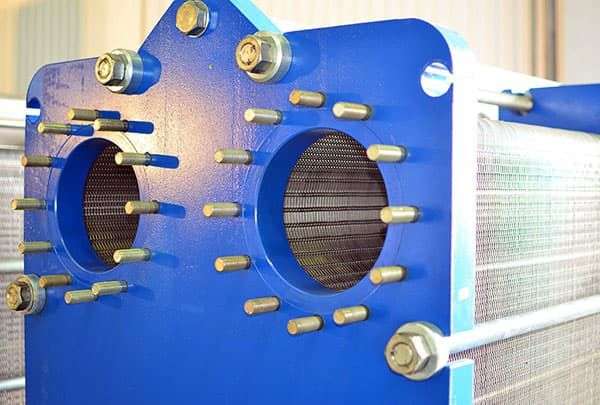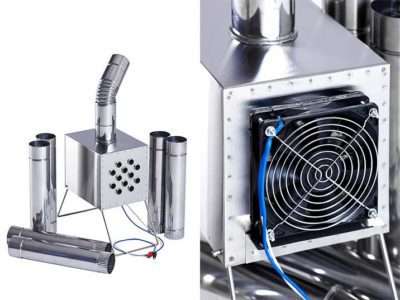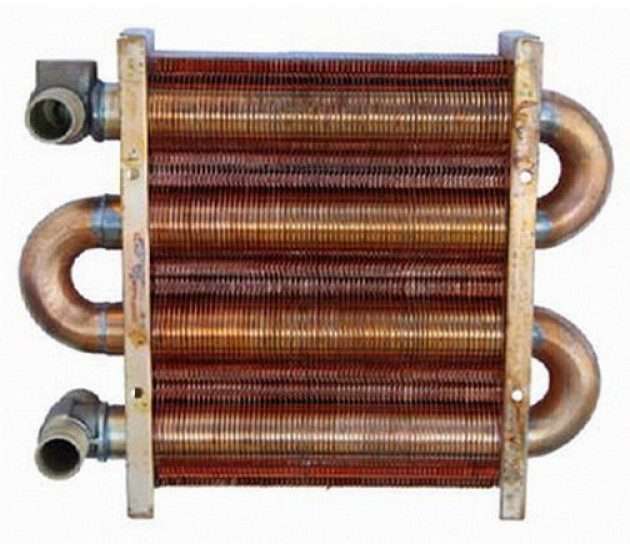A chilled beam is an air distribution device with an integral coil designed to heat or cool large buildings.
The cooled beams consist of convection coils placed in the thermal zone of the ceiling to provide reasonable cooling and heating.
It can have either two tubes (cooling only) or four tubes (heating and cooling).
The coil consists of a fin and tube heat exchanger and is the primary heat transfer component in a chilled beam.
Rows of interconnected copper tubes attached to heat-conducting aluminum fins.
This arrangement is then framed in a sheet metal casing,
which can be hung freely from the ceiling or installed atop a perforated metal ceiling.

1. The history of refrigerated packs
Modern active refrigerated packages are based on the concept of subthreshold induction units,
developed by Willis Carrier in the 1920s.
During the mid-1970s, Scandinavian engineers adopted this technology (use of an air-water system for heat transfer) and radiant heating/cooling panels for attic applications to work with new buildings designed to take advantage of natural ventilation.
As a result, passive cooled beams were developed.
Where natural ventilation was not effective, developers incorporated mechanical ventilation into a cooled beam,
which led to the development of an active cooled beam.

2. Types of refrigerated beams
There are two main types of refrigerated beams:
-
Passive beam cooler
Passive cooled beams operate using the phenomenon of natural convection.
When the air inside the space is heated or warmed,
it rises in the space where it comes into contact with the cryogenic beam cooling coil.
The air cools after passing through the coil, then returns to the occupied space,
picks up heat, and repeats the cycle.
The passive cryogenic package requires no primary air source;
It is based on induction air being pulled through the coil by the natural forces of gravity and air buoyancy.
Passive cooled beams are suitable for providing reasonable cooling in laboratories or other locations where there are high heat loads and no additional airflow is required.
In order to operate passive refrigerated beams, good air circulation is essential,
and sufficiently large openings must be provided above the negative beam for proper air circulation.
Passive beams should only be used for cooling purposes and cannot be used for heating applications due to hot air stratification.

-
Active beam coolant
Active cooled baffles consist of a primary air supply connection that delivers conditioned/dehumidified air and boost air induction through the coil.
There is some form of tweeter or primary air duct running along the beam that allows air to be discharged through holes in the beam, enhancing the induction of air through the coil.
The primary air is then cooled by mixing it with the cooled air and being discharged into the space using integral vents.
Active cooled beams are used when reasonable cooling, heating and ventilation is required.

It can be used in school buildings, public and private office buildings, healthcare facilities, meeting facilities,
and other environments that may have reasonable to high temperature levels.
Multi-service chilled beams are active or passive chilled beams with additional building services such as lighting,
fire sprinklers, audio, motion detectors, and many other equipment.

3. Advantages of refrigerated packs
- Easy to design and easy to control.
- Refrigerated package requires smaller air duct to supply air, and it reduces air supply by 50%-65%.
- The cooled package lowers and reduces ceiling space by 18 inches.
- The refrigerated package requires less floor space for its installation.
- It reduces the total construction cost of the building.
- The refrigerated package requires no maintenance as there is no moving part associated with the system.
- The refrigerated package provides superior passenger comfort.
- They require less energy to operate, resulting in up to 30% less energy consumption.
- The refrigerated package improves indoor air quality.
- It reduces the cost of operating the building throughout its life cycle.
- Cooling beam is visually pleasing and helps to increase the aesthetic appeal of the space.
- The refrigerated package produces less noise due to the lack of moving parts and slower air velocity.

4. Disadvantages of beam chiller
- Poor temperature control can lead to indoor rain.
- Refrigerated package requires careful coordination to obtain proper cooling.
- Airflow can be more than required.
- High construction costs.
- Chilled beams affect the appearance of a traditional ceiling.
For more architectural news





